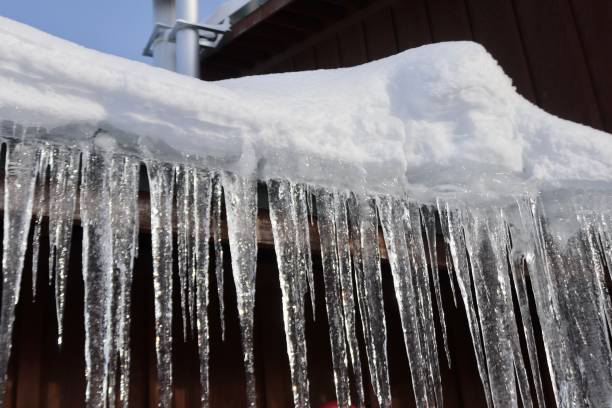Essential Tips for Preventing Frozen Pipes in Winter Conditions
Essential Tips for Preventing Frozen Pipes in Winter Conditions
Blog Article
How do you actually feel on the subject of Prevent Frozen Pipes ?

Cold weather can wreak havoc on your pipes, particularly by freezing pipelines. Below's how to avoid it from occurring and what to do if it does.
Intro
As temperatures decrease, the danger of icy pipelines rises, potentially causing expensive repairs and water damage. Recognizing just how to prevent icy pipelines is crucial for homeowners in cold environments.
Comprehending Icy Pipelines
What causes pipelines to freeze?
Pipelines freeze when subjected to temperatures below 32 ° F (0 ° C) for extended durations. As water inside the pipelines ices up, it expands, putting pressure on the pipeline wall surfaces and possibly triggering them to break.
Risks and damages
Icy pipelines can lead to water interruptions, home damage, and pricey repairs. Burst pipelines can flooding homes and cause comprehensive architectural damages.
Indications of Frozen Pipes
Determining frozen pipelines early can stop them from bursting.
Just how to determine frozen pipes
Seek lowered water circulation from taps, uncommon odors or sounds from pipelines, and noticeable frost on subjected pipes.
Avoidance Tips
Protecting vulnerable pipelines
Cover pipelines in insulation sleeves or utilize warm tape to safeguard them from freezing temperature levels. Focus on pipelines in unheated or outside locations of the home.
Heating methods
Keep indoor rooms properly heated, particularly areas with pipes. Open closet doors to enable warm air to circulate around pipelines under sinks.
Safeguarding Exterior Pipes
Yard hoses and outside taps
Disconnect and drain pipes yard hose pipes before winter season. Install frost-proof spigots or cover outside faucets with protected caps.
What to Do If Your Pipelines Freeze
Immediate actions to take
If you believe frozen pipes, keep taps available to eliminate pressure as the ice thaws. Make use of a hairdryer or towels soaked in hot water to thaw pipes gradually.
Long-Term Solutions
Architectural modifications
Take into consideration rerouting pipes far from exterior walls or unheated locations. Include additional insulation to attics, basements, and crawl spaces.
Updating insulation
Purchase high-grade insulation for pipelines, attics, and wall surfaces. Proper insulation assists preserve regular temperatures and minimizes the danger of frozen pipes.
Final thought
Protecting against frozen pipes calls for positive steps and quick reactions. By comprehending the reasons, signs, and safety nets, property owners can secure their pipes throughout winter.
Helpful Tips to Prevent Frozen Pipes this Winter
UNDERSTANDING THE BASICS: WHY PIPES FREEZE AND WHY IT’S A PROBLEM
Water freezing inside pipes is common during the winter months, but understanding why pipes freeze, and the potential problems it can cause is crucial in preventing such incidents. This section will delve into the basics of why pipes freeze and the associated problems that may arise.
THE SCIENCE BEHIND FROZEN PIPES
When water reaches freezing temperatures, it undergoes a physical transformation and solidifies into ice. This expansion of water as it freezes is the primary reason pipes can burst. As the water inside the pipe freezes, it expands, creating immense pressure on the walls. If the pressure becomes too great, the pipe can crack or rupture, leading to leaks and water damage.
FACTORS THAT CONTRIBUTE TO PIPE FREEZING
Low Temperatures: Extremely cold weather, especially below freezing, increases the risk of pipes freezing. Uninsulated or Poorly Insulated Pipes: Pipes located in unheated areas, such as basements, crawl spaces, or attics, are more prone to freezing. Insufficient insulation or lack of insulation altogether exacerbates the problem. Exterior Wall Exposure: Pipes running along exterior walls are susceptible to freezing as they encounter colder temperatures outside. Lack of Heating or Temperature Regulation: Inadequate heating or inconsistent temperature control in your home can contribute to frozen pipes. PROBLEMS CAUSED BY FROZEN PIPES
- Pipe Bursting: As mentioned earlier, the expansion of water as it freezes can cause pipes to burst, resulting in significant water damage.
- Water Damage: When pipes burst, it can lead to flooding and water damage to your property, including walls, ceilings, flooring, and personal belongings.
- Structural Damage: Prolonged exposure to water from burst pipes can compromise the structural integrity of your home, leading to costly repairs.
- Mold and Mildew Growth: Excess moisture from water damage can create a favorable environment for mold and mildew growth, posing health risks to occupants.
- Disrupted Water Supply: Frozen pipes can also result in a complete or partial loss of water supply until the issue is resolved.
WHY CERTAIN PIPES ARE MORE PRONE TO FREEZING
- Location: Pipes located in unheated or poorly insulated areas, such as basements, crawl spaces, attics, or exterior walls, are at higher risk of freezing.
- Exterior Pipes: Outdoor pipes, such as those used for irrigation or exposed plumbing, are particularly vulnerable to freezing as they are directly exposed to the elements.
- Supply Lines: Pipes that carry water from the main water supply into your home, including the main water line, are critical to protect as freezing in these lines can affect your entire plumbing system.
- Underground Pipes: Pipes buried underground, such as those connected to sprinkler systems or outdoor faucets, can be susceptible to freezing if not properly insulated.
https://busybusy.com/blog/helpful-tips-to-prevent-frozen-pipes-this-winter/

Do you really like more info about How to Prevent Your Pipes From Freezing? Try leaving feedback further down. We would be pleased to listen to your insights about this entry. We hope to see you back again in the near future. Feel free to pause to promote this article if you appreciated it. We truly appreciate reading our article about How to prepare your home plumbing for winter weather.
More Details Report this page